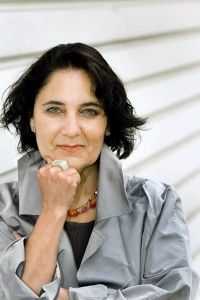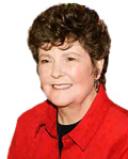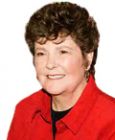Education
Will Neuroscience Change Education?
Think Tank CEO M. A. Greenstein Says “YES!”
Posted December 11, 2012
I was trained as an educator, and I’ve worked as a teacher and curriculum writer. More recently, I’ve been listening to what neuroscientists have to say and writing about cutting-edge discoveries about how the human brain works (as in my last book, Brain Sense). Having experience in both arenas leads me to wonder, How will our new understandings of the structure and function of the human brain influence educational practices now and in the future?

Dr. M. A. Greenstein of the George Greenstein Institute.
In search of an answer to that question, I recently spoke with Dr. M. A. Greenstein of the George Greenstein Institute of Pasadena, California. Greenstein who is, not coincidentally, the inventor of SpaceSuit Yoga (the art and neuroscience of somatic intelligence tracking, now called SITT), says the institute’s mission is to bridge the gap between pure research and the classroom, delivering (in Greenstein‘s words) “the wisdom and power of truly applied neuroscience into the hands of learners and leaders to make change by design!”
Specifically, says Greenstein, the science of neuroplasticity is changing the way we think about our brain’s learning potential. For example, new research has shown that failure to use and develop spatial memory strategies correlates to less use of the hippocampus, the part of our brain responsible for developmental learning and short-term memory formation. Incorporating spatial memory activated by music, art, and dance at an early age can grow our brains by using more of the hippocampus, resulting in stronger development of cognitive and social problem-solving skills.
I asked Dr. Greenstein to elaborate on her background and the work of her institute. Here’s what she told me.
Q. Please tell us a little about yourself and the mission of the Greenstein Institute?
A. We specialize as a knowledge-transfer company, specifically in taking bench neuroscience to the public to affect learning and wellness. I trained originally as a movement therapist, and I worked in Los Angeles to bring the arts and the sciences together in educational practice. I have a real interest in advancing research and learning. I love research. I come from a medical family that put a lot of emphasis on contributing to society, so my emphasis has always been to help stop suffering and to enhance creativity.
Given the development of where the culture is today, in terms of advancing technology (for example, having online sites that promote content), the movement of neuroscience, the movement of science and arts learning, the movement of socioemotional intelligence, and the movement of gaming, my institute is now centered as an integrator of those movements. We work with research centers as well as advocacy groups like parents who want to change education, and technology groups who are trying to make a difference in how kids learn and grow—how they tap their own potential.
Q. How did you come to establish this institute?
A. It came out of recognizing that, as a person working in a design school, I had no leadership opportunity to make real change. In 2006, after having a Fulbright in Taiwan and China and working as a researcher in the 1990s, I decided that I was fed up with the status quo in education—even design education, which is probably more progressive than anything else you’d find in education in terms of hands-on practices, learning through the body, and learning by trial and error. There seemed to be more and more emphasis on assessment and less and less interest in how kids learn well. More stress is being placed on students, and children are overburdened with heavy schedules.
I thought, I want to make a difference. I’d been trained in meditation and basic neuroscience applied to health and wellness. So I thought, I’m going to start my own institute and see if I can come up with another way to communicate how you learn. I wanted to grow in my own vision of what’s possible for education. It is the most kind and ethical thing to pull back the curtain and reveal the wonderful workings of how we understand neuroplasticity and how we understand how the brain functions as a system for emotional regulation and opening up circuits of learning. My life was changed by learning this, so I am taking the bold step of putting this institute out in front and saying, We know that if you give kids a little information about their own biology, you can change the game of how they might think about themselves and their problems and their own potential.
Q. You have expressed a particular interest in the hippocampus of the brain and its relationship to spatial learning. What’s your research base?

Dr. Veronique Bohbot of McGill University.
A. I met Veronique Bohbot of McGill University at a Society for Neuroscience meeting. She had given a paper on spatial memory training. I got very excited. One thing that dancers know well is spatial awareness; it is the language we use. So we’ve worked with Dr. Bohbot for more than a year now, and we just received a Molson grant to transfer Dr. Bohbot’s research into project-based learning for children in Canadian schools.
Dr. Bohbot’s research deals with the role of the hippocampus in spatial memory, which is the ability to remember one’s relationship to objects in space. The hippocampus is the working memory orchestrator of all the sensory networks. For example, I remember staying in a room in Tucson, Arizona, last night. I remember the room, I remember who I talked to, and I remember where I was in the room when I had a conversation. Dr. Bohbot’s research distinguishes that hippocampal role in the strategy of remembering versus the function of the caudate nucleus, which deals specifically with habit. A good example is the experience of driving home safely but not remembering the journey. That’s habit, and it’s handled primarily via the caudate nucleus.
Bohbot can find out in her tests whether people are using the hippocampus or the caudate nucleus. If they are using the caudate nucleus and not the hippocampus, then the hippocampus is not being asked to do what it does well, which is strategize for brain growth and brain health. What develops the hippocampus? Learning new things in time and space, specifically spatial memory. Furthermore, the hippocampus is the first region to be attacked by Alzheimer’s plaques. So we think attention should be given to growing the hippocampus for working memory in children’s development, but also to stave off Alzheimer’s later.
Q. What specific activities are forwarding your mission?
A large number of projects that we describe on our website. One is a forum for the University of Arizona on the art and neuroscience of happiness. We are helping galvanize universities to step up to the plate and start working on taking their faculty that is rich in these areas and having a dialogue for the college student body, as well as an out-reach to the immediate area, so (for example) we have people working with at-risk groups in Native American communities to come and be part of our forum, and we are showing the film Project Happiness, which was developed by Randy Taran, one of my colleagues.
What we are trying to do is collaborate with other groups that have great content, collaborate with universities who have great resources, and we are the team that inspires unique ways to transfer the knowledge. We bring scientists who are working with stress reduction together with researchers who are dealing with mood modulation to dialogue about what they know. We bring scientists out to speak about their discoveries, and then we involve practitioners … to look specifically at what constitutes happiness, how do we think about it, how do we speak about it, and what are some of the agents that we already have in our culture that contribute to happiness. So our goal is to create the dialogue. We want researchers talking to practitioners who are engaged in related subject areas.
For More Information:
Veronique Bohbot’s research papers are available for download here.
See a research report on the effects of dance training on teen health: Teens and Psychosomatic Illness.
To learn about a Greenstein Institute art contest promoting brain awareness, click here.




